
by Steve | Mar 18, 2021 | Magazine, Magazine Articles, March-April 2021
By David Watson –
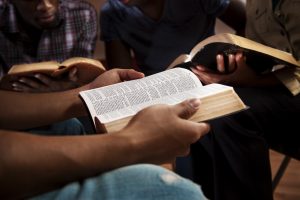
The Rev. Dr. Esau McCaulley is an Anglican priest and Assistant Professor of New Testament at Wheaton College. While studying at the University of St Andrews in Scotland, he received his PhD under the direction of the eminent New Testament scholar N. T. Wright. McCaulley’s new book, Reading While Black, has engendered considerable discussion both in the church and the academy, and with good reason. It is an informative, thought-provoking, sometimes convicting work that brings together his personal story as an African American growing up in the South, the larger tradition of biblical interpretation in the black church, and insights of historical and literary exegesis. Allow me to walk through the chapters and the topics addressed in sequence.
1. “The South Got Somethin’ to Say.” McCaulley marks out the terrain of what he calls “Black ecclesial interpretation” of the Bible. This tradition stands amidst other traditions, namely white progressivism, white evangelicalism, and African American progressivism. The black church tradition he describes is theologically orthodox, a characteristic it shares with white evangelicalism. In this sense it differs from white and African American forms of progressivism, which have tended toward theological and biblical revisionism. Yet for all their commonalities, the black ecclesial tradition and white evangelicalism differ in that the latter has often failed to confront matters of racism and injustice, and at times has perpetuated them. McCaulley highlights a style of biblical interpretation that maintains continuity with historic Christian doctrines and is located within the experience of African American Christians who have struggled with injustice and oppression.
2. “Freedom Is No Fear.” This chapter deals with the matter of policing, the relationship between African Americans and the police in the United States, and biblical texts that can provide insight into just policing. He takes up Romans 13:1-2, arguing that it does not represent a call to absolute obedience of government authorities, particularly unjust ones. God raised up Pharaoh (Romans 9:17), but then used Moses to defy him and free the Israelites from unjust rule.
McCaulley argues that Romans 13:1-2 is “a statement about the sovereignty of God and the limits of human discernment.” We are allowed to condemn evil like the prophets did, but we also may not know how we are functioning in God’s wider purposes, and therefore “we cannot claim divine sanction for the proper timing and method of solving the problems we discern.” McCaulley then offers a brief discussion of policing in the Roman world of the early Christians, and from there he moves into a discussion of a Christian theology of policing. As Christians, we should work toward the formation of governments, including policing policies, that allow people to live without fear. This has not been what we have done in the United States, and Christians must call upon the state to do better.
3. “Tired Feet, Rested Souls.” McCaulley takes up the issue of the relationship between church and government in this chapter. African American Christians, McCaulley says, “have never had the luxury of separating our faith from political action.” He examines two texts, Romans 13:1-7 and 1 Timothy 2:1-4, which instruct Christians regarding the following duties: “(1) submit to the state, (2) pay your taxes, and (3) pray for those in leadership.” None of these duties is wrong, he says. Rather, by themselves they are simply inadequate. The testimony of Jesus shows us that it is at times not only permissible but necessary to criticize the government. Jesus criticized both Herod’s character and his politics. We can also find criticism of the political order in the Sermon on the Mount, Paul’s writings, and the Revelation to John. Black Christians who criticize the public order have biblical warrant for their actions and they have an ally in the God of Israel.
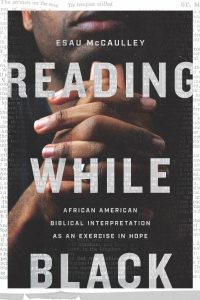
4. “Reading While Black.” McCaulley discusses the ways in which African American Christians often face opposition from both the ideological left and the right. On the one hand, there are those who restrict the Bible to the saving of souls and neglect its power to critique unjust social structures. On the other hand, there are critics of Christianity who say that the Bible can do nothing for them anyway, that its teachings do not lead to a more just society. McCaulley then turns his attention to themes in the Gospel of Luke, which “contains a vision for the just society transformed by the advent of God that speaks to the hearts of Black Christians.” Jesus’ teaching and ministry, as depicted in Luke, “involves nothing less than the creation of a new world in which the marginalized are healed spiritually, economically, and psychologically.” Despite the fact that many people seem to miss it, the Bible provides a powerful warrant not just for the saving of souls, but for the liberation of bodies.
5. “Black and Proud.” In this section, McCaulley takes up the relationship between black identity and the Bible. While some claim that Christianity is a “white man’s religion,” this claim ignores the origins and early development of Christianity in the Middle East and North Africa. He also uses the examples of the half-Egyptian, half-Jewish Ephraim and Manasseh (Genesis 48:3-5) to demonstrate that it was always God’s plan to develop a community of different ethnicities. As he puts it, “African blood flows into Israel from the beginning as a fulfilment of the promise made to Abraham, Isaac, and Jacob” (italics original).
McCaulley draws upon Psalm 72 to demonstrate that God envisioned a just, multiethnic kingdom that would extend throughout the globe. These promises are fulfilled through Jesus, and we see examples of the multiethnic nature of Jesus’ kingdom in Simon of Cyrene (Mark 15:21) and the Ethiopian eunuch (Acts 8:26-40). He closes this chapter with a discussion of the vision of Revelation 7:9-10, in which people of every nation, tribe, and language stand before the lamb and the throne.
6. “What Shall We Do with this Rage?” As the title suggests, it deals with the suffering of African Americans and the emotions such suffering produces. He begins by discussing the anger expressed in the prophets and psalms. The discussion of Psalm 137 is especially poignant here. Next he takes up the prophetic warnings against endless cycles of violence. “The miracle of Israel’s witness is that the Old Testament could imagine something beyond blood vengeance” (italics original).
God’s answer to human suffering, including black suffering, “is to enter that suffering alongside us as a friend and a redeemer.” God has done this through the cross, and thus broken the cycle of vengeance and death. McCaulley ends the chapter by considering the biblical themes of the resurrection, ascension, and final judgement as necessary for dealing with black anger and pain.
7. “The Freedom of the Slaves.” This chapter addresses biblical passages that discuss slavery. Yes, he notes, there are passages in the Bible that, when taken in isolation, one could read as supporting the institution of slavery. Nevertheless, he holds, “the Old Testament and later the New Testament create an imaginative world in which slavery becomes more and more untenable. Stated differently, God created a people who could theologically deconstruct slavery.” There are passages in Scripture, he argues, that positively describe God’s intents and purposes for our lives. Other passages, however, simply mitigate the harmful effects of human sinfulness. He addresses texts dealing with slavery in both Testaments and provides exegetical insights that can help us to understand these texts in relationship to a broader Christian ethic that categorically rejects slavery.
8. “An Exercise in Hope.” McCaulley emphasizes here that his aim has not been innovative, but rather to give expression to a tradition that has preceded and formed him. There are rich insights in this tradition worthy of further discussion and exploration.
In the epilogue, he reflects upon various strands of African American biblical interpretation. He notes that African American biblical interpretation is clearly socially located, but in this sense it is no different from any other form of biblical interpretation. Further, he argues, while some biblical interpretation focuses on personal transformation to the exclusion of social transformation or vice-versa, the tradition of African American biblical interpretation focuses on both. He refers to liberative, conversionist, and holiness strands of biblical interpretation, all of which are represented in various ways in this book.
Issues of race are at the forefront of public discourse in the United States today. These issues are important and complex. As Christians, we cannot avoid the places in the world where there is pain, anger, suffering, and injustice. In fact, we are called into them. For white Christians, however, it can be difficult to know how to enter into these conversations around race. Further, while there are myriad voices espousing secular theories regarding how to deal with racial injustice, as Christians we will be more concerned with the guidance of Scripture and the discernment of brothers and sisters in Christ. For those who want to learn from Scripture about matters of race and justice, this book is a gift.

Dr. Esau McCaulley
Here is a brother in Christ sharing his heart, sharing the fruit of his labor as a scholar and priest, inviting fellow Christians into a conversation that is desperately needed in the American church. He is committed to the faith once and for all entrusted to the saints. He is committed to life in keeping with the witness of Scripture. He shines light on a tradition of scriptural interpretation that has sustained African American Christians across centuries of hardship and enlivens them even today. Let those who have ears to hear, listen.
There are exegetical conclusions in the book with which one might take issue. For example, I had a hard time following the discussion of Romans 13:1-2 all the way through to the conclusion he reaches. On the whole, though, McCaulley’s exegetical moves are convincing. I was particularly interested in his analysis of policing in the ancient Roman world, a topic which, as he notes, merits further and deeper discussion. I also found the discussion in chapter 7 of texts dealing with slavery extremely helpful. In fact I plan to draw upon his analysis the next time I teach on Paul’s letters. The book is full of rich and thought-provoking exegetical insights.
As a New Testament scholar, I appreciate his earnest wrestling with the text. He does not sugar-coat the difficulties we find therein, but he draws out the redemptive messages so pervasive in Scripture when we read with an eye to its canonical narrative of salvation.
If you are a pastor or layperson looking for a way to engage fellow Christians on issues of faith and race, I recommend Dr. McCaulley’s Reading While Black. It is an accessible, biblically-based, and challenging discussion of these issues so important to the integrity of our Christian witness.
David F. Watson is a professor of New Testament and the Academic Dean at United Theological Seminary in Dayton, Ohio. He is the author of several books, including Scripture and the Life of God (Seedbed).

by Steve | Mar 18, 2021 | Magazine, Magazine Articles, March-April 2021

Illustration from Charlie Mackesy’s The Boy, the Mole, the Fox, and the Horse (HarperOne).
By Courtney Lott –
I spent a rainy January morning weeping into the pages of a children’s book. It’s called The Boy, the Mole, the Fox, and the Horse.
Though simple on the surface, the drawings and uplifting sayings from the pen of Charlie Mackesy struck me profoundly. After I read the last page, I rushed quickly to Instagram to find more of his beautiful artwork. As I scrolled through his feed looking for a favorite to use as a new desktop background, I realized how much of an exercise in futility such a mission would be. Every image filled my cup. Often in ways I didn’t realize I needed.
Through the questions of the main character – simply called “the boy” – and the answers of the mole, fox, and horse, Mackesy provides rich insight into the world and deep comfort and encouragement to his readers.
“It’s surprising that I’ve made a book,” writes Mackesy in his introduction, “because I’m so bad at reading them. The truth is I need pictures. They are like islands, places to get to in a sea of words.”
Born in Northumberland, England, Mackesy started drawing when he was nineteen after the death of his best friend. While a deep need to discover purpose had always driven him to figure out why we are all here in the first place, this event served as an unavoidable tipping point. He sat on the pavement and drew, drew “obsessively,” for years in order to try and “make sense of existence.”
The answer, he says, lay behind him, in a lyric from David Bowie’s “Major Tom,” a song he and his best friend once sang long and loud even as atheists. “… may God’s love be with you.” They would scream it, Mackesy says, because it felt really good.
It took a long time and a lot of drawing for him to be able to see this as the answer. Science only told him how, he says, but never why, his atheism boiled it all down to genes, and religion gave him nothing more than a set of rules. None of these things met him in his sorrow and confusion.
Then, in a fragile state after the loss of his friend, he saw a statement that stopped him in his tracks. While waiting for the tube in London, he encountered a huge poster with the phrase, “Cast your burdens onto Jesus because he loves you.”
Though he had no desire to become religious, Mackesy says he read the phrase over and over, questioned and questioned, and dug and dug. And finally, after much wrestling, he realized the answer to “why” is Jesus. That no matter what choices we make, we are unconditionally loved by him. Ultimately, Mackesy concluded, this is freedom.
The reality of Christ’s love solidified and took shape for Mackesy when he finally visited church and met Nicky Gumble, the well-known rector of Holy Trinity Brompton church in London. Gumble immediately invited him to Alpha, an eleven week course that seeks to create a space where individuals can participate in a conversation about faith, life, and God. This served as the perfect place for Mackesy to continue to work out the answer to his ever-present question “why?”
As we go to press, Mackesy has sold has 1.4 million copies of his book and it has been translated into 17 languages.
His “obsessive drawing,” Mackesy says, reflects Bowie’s own searching for his “tenuous connection with God.” You can see this messy, honest journey splattered across the pages of The Boy, the Mole, the Fox and the Horse in a kind of shabby glory. Each soft pen stroke portrays in its own way what Mackesy describes as “divinity mixed with the human mess.”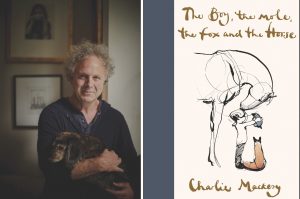
Perhaps it is this very untidy authenticity that accounts for the success of Mackesy’s book. What started a simple Instagram campaign to support National Health Service (NHS) medical workers exploded into a world-wide phenomenon. An editor at Ebury Press approached Mackesy when he hit 30,000 followers on the platform, asking if he’d be interested in putting the drawings together in a book.
Within a few months of its October 2019 release, it became a Christmas bestseller and went on to spend 55 weeks in the Sunday Times Bestsellers list top ten. More than that, his art has moved in the hearts of the worn out and weary.
Nurses under pressure reported to him that they’ve used his drawings to find a little peace amidst the 2020 chaos, PTSD units and clinics have utilized them for their patients, and thousands of individuals have printed off copies for themselves as their own little islands of peace in a trying time.
“These characters aren’t telling people what to do, because they’re talking to each other,” says Mackesy. “We’re just listening in, if you like, on the boy’s questions and their answers and vice versa.”
This overheard conversation invites the reader to vulnerability because the boy asks about that which we’re afraid to speak out loud. His longings and ponderings are our longings and ponderings. Like any good protagonist, he serves as an avatar for the audience, allowing us to learn along with him as he goes along on his journey.
This is the heart of Mackesy’s artwork. To provide a space for his readers to be open about what they’re feeling, and to be exactly who God created us to be. “No one is ordinary,” Mackesy said in an interview for GQ. “Everyone is unique. And love doesn’t require you to be anything other than who you are.”
Courtney Lott is the editorial assistant at Good News.

by Steve | Mar 18, 2021 | Magazine, Magazine Articles, March-April 2021
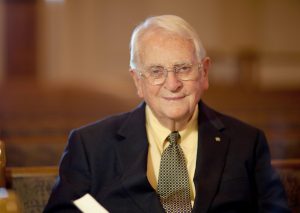
The Rev. William C. Mason.
By Steve Beard –
Over the last several months, Good News lost two warm-hearted Christian friends who played important roles in the legacy of this ministry. Both writer Marilyn N. Anderes and the Rev. William Mason recently passed away and will be dearly missed by those of us at Good News who are grateful for their lives, witness, and faith.
Pastoral leadership. During his 30-year tenure as the senior pastor of a growing and thriving United Methodist congregation, the Rev. William C. Mason served as the chair of the Good News board of directors. We counted on his steady leadership, evangelical convictions, and fervent prayers. At his death last October, he was 93 years old.
Intermingled with our mourning of our friend and a lifetime member of the Good News board is a great deal of rejoicing in remembering a soft-spoken man with a pastoral heart who began every morning by praying in solitude for his family, his congregation, and our church.
Bill’s rock-solid faith and perseverance helped guide Tulsa’s Asbury United Methodist Church to become one of our denomination’s most distinguished and vision-oriented congregations. “His love for the Lord and for people, his scriptural teaching, and his pastoral care endeared him to generations of Oklahomans and beyond,” affirm his friends at Asbury. “Bill always stood for traditional and evangelical convictions.”
“Enter through the narrow gate,” said Jesus. “For wide is the gate and broad is the road that leads to destruction, and many enter through it. But small is the gate and narrow the road that leads to life, and only a few find it” (Matthew 7:13-14).
Bill had been an office supply salesman when he heard Billy Graham at an Oklahoma City revival in 1960 preach about the two roads from Jesus’s message in Matthew. “As I laid in bed that night, the reality of my own life passed before me. I realized I was on the wide road that leads to destruction, and it was not the way I wanted to live my life anymore. I prayed and went to sleep,” he recalled.
“The next morning, I was a new person. I lost my appetite for alcohol, for lying to cover my tracks, for foul language, for using church as a social function. I was astounded at how vibrant I felt. I was 28 years old, yet I was born again in Jesus Christ.”
Bill felt called to full-time ministry and was appointed to Asbury after seminary. Bill credited seeking God’s will and direction in prayer for Asbury’s growth and development. The membership grew from 118 to over 5,200 members. He was featured on the cover of Good News twelve years ago, along with his successor, Dr. Tom Harrison, in an inspirational story about the ministry of Asbury. After 29 years as senior pastor of Asbury, Bill retired in 1993 and Tom was appointed to follow – and has faithfully continued to build upon the godly foundation.
“Bill and I have the same attitude toward ministry,” Harrison said. “We believe that to be faithful to the Great Commission, meeting people where they live is crucial; it is not an option.”
Writing to the Asbury congregation back in 2012, Mason wrote: “The lost, those who don’t yet know the love of Christ, should always be on your minds and hearts. And you must pay close attention to one another so that none who are already in Christ are lost. I pray that God will show you how to cooperate with what he wants to do in the world. May you invest the very best of yourself and your church in this endeavor, for what else yields so high a return?”
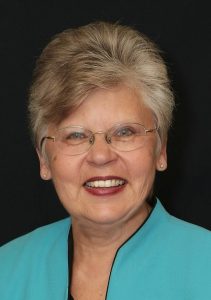
From the Heart. For 16 years, Marilyn Anderes served as the back-page “From the Heart” devotionalcolumnist for Good News. She died on Sunday, December 27, 2020 after a battle with pulmonary fibrosis. She is survived by her husband of 55 years, John, as well as her children and grandchildren. Marilyn was a devoted mom, an elementary and middle school teacher, mentor, and author. She had a magnificent smile and a generous spirit.
“Marilyn, Mal, as we affectionately called her, came to our church, Mount Oak United Methodist Church in Bowie, Maryland, with her family in 1971,” recalled the Rev. George Anderson, a retired United Methodist pastor. “In January of 1972 she gave her life to Jesus. My wife, Carol, says of Marilyn, ‘I taught her the scales (spiritually) and she made it into a concerto.’ She became an incredible Bible scholar, teacher, writer, speaker – but most of all, she and her family became our lifelong dear friends.”
Marilyn taught Bible studies and led seminars and retreats, both nationally and internationally, for the last 40 years. She was also the author of several books and dozens of magazine articles. The Intentional Remnant, her last book, was released just a few months before her death. An excerpt from this book appeared in the November/December issue of Good News.
“In all her writing and speaking, Marilyn called her audience to a deeper intimacy with God,” said Katy Kiser, team leader of the Renew Network. “Like the title of her book published in 2006, Marilyn wanted others to know that regardless of where we are in our walk with the Lord, there is always More. She knew the faithfulness of the Lord goes with us through our good times as well as our most difficult circumstances and trials.
“Today, Marilyn is home with the Lord. I see her delving even deeper into all that Jesus has prepared for her. As Paul wrote, ‘No eye has seen, no ear has heard, and no mind has imagined what God has prepared for those who love him’” (I Corinthians 2:9).
Steve Beard is the editor of Good News.

by Steve | Mar 8, 2021 | Home Page Hero Slider, Magazine, Magazine Articles, March-April 2021
 By Walter Fenton –
By Walter Fenton –
The Transitional Leadership Council, a 17 member team of theologically conservative Methodists, has released information on the formation of the new Global Methodist Church. The council said the new church will officially come into existence when a United Methodist General Conference adopts the implementing legislation for the Protocol for Reconciliation and Grace through Separation. Alternatively, if it becomes apparent that the leading bishops, centrists, and progressives who covenanted to support the Protocol no longer do so, then the council will consider bringing the new church into existence without delay.
“The primary mission of the Global Methodist Church will be to make disciples of Jesus Christ who worship passionately, love extravagantly, and witness boldly,” said the Rev. Keith Boyette, who serves as chairman of the Transitional Leadership Council. “Over the past year the council members, and hundreds of people who have informed their work, have faithfully and thoughtfully arrived at this point.”
With the announcement of the new church the council authorized the release of a comprehensive and detailed website (globalmethodist.org). It includes the new church’s mission statement, vision, information about its name and logo, a frequently asked questions section, and downloadable versions of the church’s Transitional Book of Doctrines and Discipline in English, French, Korean, Portuguese, and Spanish. The website clearly notes that “the Global Methodist Church is in formation” and will not officially launch until the Protocol is approved.
“It was a great honor to participate in such exhilarating work,” said the Rev. Philippe Adjobi, a member of the Transitional Leadership Council, a district superintendent in the Cote d’Ivoire Annual Conference and a General Conference delegate. “I believe the Global Methodist Church will fulfill the expectations and aspirations of local churches throughout Africa. They will appreciate focusing on what is essential: testifying to Jesus Christ for the transformation of the world.”
Adjobi and the names of the other 16 members of the council – men and women from Africa, Eurasia, the Philippines, and the United States – are listed on the Global Methodist Church’s website. The list includes laity, clergy, and bishops who believe an amicable and orderly separation is the best way forward.
The special General Conference in 2019 proved to be as contentious and divisive as many people anticipated when a Traditional Plan reaffirming the UM Church’s sexual ethics, teachings on marriage, and ordination standards was approved. Progressive and centrist United Methodists in the U.S. denounced the General Conference’s actions and resolved to defy the global body vested with the sole power to speak authoritatively for the UM Church.
Within weeks, small groups of centrist, progressive, and traditionalist UM Church leaders, quietly and often haltingly began having conversations about plans for dividing the denomination. A group convened by the late Bishop John Yambasu of Sierre Leone and guided by the world renown mediator Kenneth Feinberg hammered out the Protocol and its implementing legislation. The 16 member team included leading UM bishops and representatives from the major advocacy groups representing centrists, progressives, and conservatives.
The Protocol team released its plan in early January 2020 and it quickly gained the sometimes hopeful and sometimes grudging support of United Methodists around the world. It appeared headed for likely passage at the denomination’s May 2020 General Conference.
In light of the Protocol, a group of theologically conservative UM Church leaders met in Atlanta in March 2020. The group included several traditionalist bishops, evangelical advocacy group leaders, and other clergy and laity who identified as theologically conservative. During their meeting, they nominated the members of the Transitional Leadership Council, assigning them the task of forming the new church.
“I am convinced the Global Methodist Church will be a vibrant, vital expression of Methodism in terms of its teachings and ethics,” said Dr. Bob Hayes, a Transitional Leadership Council member and Bishop in Residence at The Woodlands United Methodist Church in The Woodlands, Texas. “As a fourth generation Methodist I am excited by a fresh wind of the Holy Spirit where I see God doing a new thing! God is creating a church rooted in Scripture and the love of Jesus, and he is calling us to participate with him.”
At the time of the Transitional Leadership Council’s formation, no one knew the Covid-19 pandemic would result in the postponement of the UM Church’s 2020 General Conference. Despite the postponement of an in-person General Conference, the Transitional Leadership Council has been meeting almost weekly since March 2020. As is evident in its Transitional Book of Doctrines and Discipline, the council has approved the Global Methodist Church’s core confessions of faith, hammered out a transitional governing structure, and adopted the new church’s name and logo. The council has emphasized fidelity to the historic teaching of the Christian faith, and a desire to be a truly global church.
“I believe a good number of ethnic congregations will want to align with the Global Methodist Church,” said the Rev. Kevin Ryoo, a council member and an elder in the Dakotas Annual Conference. “They long for a church which honors the Bible, stays within the traditional mission of Methodism, and keeps local church ministry as a first priority. I know Korean Methodist congregations have a strong passion for evangelism and mission.”
Boyette, who is the president of the Wesleyan Covenant Association, acknowledged that while the association has played a role in preparing for the new church, many other traditionalist leaders have been critical in the formation of the Global Methodist Church.
“Traditionalists do not march in lock-step,” said Dr. Leah Hidde Gregory, a Transitional Leadership Council member and a district superintendent in the Central Texas Annual Conference. “Some traditionalists have been wary of the WCA, thinking it was moving too fast and others believing it was moving too slow. It took a few meetings before I realized there were only three people from the WCA leadership on our council. It became obvious to me that the group who nominated us wanted to make sure all people who regard themselves as traditionalist, orthodox, conservative, or evangelical were represented on the Transitional Leadership Council.”
In the “Frequently Asked Questions” section of its website the new church states, “Women, like men, will be called to serve in the Global Methodist Church and will be entitled to serve at all levels.” The section also says, “As a truly global church the denomination will be ethnically and racially diverse and will insist on the equal treatment of all the church’s members.”
“I believe Methodism is on the cusp of another Great Awakening,” said Transitional Leadership Council member Cara Nicklas, an attorney and General Conference delegate from the Oklahoma Annual Conference. “The Global Methodist Church is the vehicle by which that will happen because we value a connectional, global church with doctrine and discipline that is not guided by our U.S. culture but is simply focused on bringing people into a deep and intimate relationship with our Lord and Savior Jesus Christ.”
Walter Fenton is Vice President for Strategic Engagement for the Wesleyan Covenant Association and an elder in the Greater New Jersey Annual Conference.
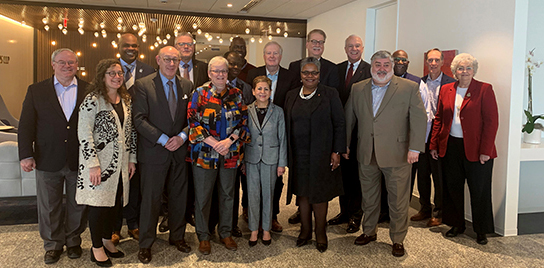
by Steve | Mar 8, 2021 | Home Page Hero Slider, Magazine, Magazine Articles, March-April 2021
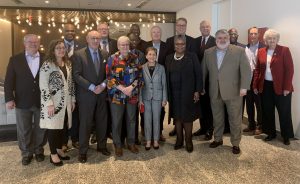
Members of a diverse group of bishops and other United Methodist leaders after reaching agreement on a proposal that would maintain The United Methodist Church but allow traditionalist congregations to separate into a new denomination. Photo courtesy of the Mediation Team.
By Thomas Lambrecht –
On February 25, the Commission on the General Conference announced that the 2020 General Conference – postponed once until August 29, 2021 – has now been postponed again until August 29, 2022. On the same day, the Council of Bishops announced it is calling a special session of the General Conference to meet virtually on May 8, 2021, to address technical issues that would allow the church to continue operating until the full General Conference can meet.
Notably, the Protocol for Reconciliation and Grace through Separation is not currently on the agenda for the special virtual General Conference.
No Regular General Conference. The Commission made the expected decision that an in-person General Conference could not take place in 2021, due to the travel restrictions in place now and expected to remain in place for the foreseeable future. Travel by delegates from outside the U.S. – fully 40 percent – to attend General Conference will likely still be impossible throughout 2021.
A Technology Study Team met during January to consider the possibility of a virtual General Conference. After extensive research and conversations with representatives of the church outside the U.S., the team concluded that a virtual General Conference, even with a limited agenda, would not be possible because of issues related to time zones, reliable electricity and Internet service, travel restrictions, and the integrity of the voting process.
As one who promoted the viability of a virtual General Conference, reading the report of the Technology Study Team convinced me that it is not feasible with current technology during a pandemic. This decision is disappointing, and the situation is frustrating, but it was the right call.
The Special Session. The Council of Bishops proposes that the special session gather on May 8 for an extremely limited agenda. The first task would be to secure a quorum, in order for the special session to take action. In light of the above considerations, it is unlikely that more than a scattered few delegates from Africa or the Philippines could attend. It must be acknowledged that, despite the high value on universal participation by all delegates, this special session will mainly include U.S. and European delegates who have access to Internet technology. But this situation is unavoidable in trying to get some of the church’s administrative processes unstuck.
With the knowledge that many delegates could not participate in a deliberative General Conference, the Council of Bishops has limited the proposed agenda to twelve administrative items that it considers non-controversial. The virtual General Conference will also act to allow the voting to be done by paper ballots that would be compiled by mail and the results announced on July 13, 2021. The paper ballots would not allow any amendments to the above legislation. Delegates would simply vote yes or no. Although not all delegates could participate in the virtual General Conference, all 862 delegates could cast paper ballots on the proposed legislation.
What about the Protocol? Although the proposed agenda for the virtual special session of General Conference does not include the Protocol, the decision about separation requires urgent resolution. Many of the other decisions, such as the budget and the number of bishops to elect, depend upon how many churches and annual conferences will remain in the UM Church after separation. It would be better to make the decision regarding separation before needing to make all these other decisions. It is in no one’s best interest to prolong this decision. Deciding now would enable the UM Church and the new traditionalist denomination to begin moving ahead in ministry as we come out of the pandemic. Many are ready to act, and deciding now would open the door for churches that are ready to go in a new direction.
It is in the best interest of centrists and progressives that General Conference make a decision now regarding the Protocol. Once traditionalists start moving to a new denomination, it would allow centrists and progressives free rein to change the church’s position on marriage, sexual ethics, and other isssues at the 2022 General Conference.
The need to offer amendments to the Protocol is not essential. The mediation team negotiated the major terms of the Protocol based on compromise and give-and-take. Changing any of those major terms could jeopardize the carefully balanced agreement and throw the adoption of the Protocol into question. It would be better to adopt the Protocol as negotiated, with the implementation dates extended by one year, which would be possible under the plan of the special virtual session. The Council of Bishops could amend the call for the special session to include the Protocol. If not, the delegates – with a two-thirds vote – could add the Protocol to the agenda of items to be dealt with by the special session.
Hope for the Future. Meanwhile, the Protocol mediation team needs to provide leadership in continuing its support and promotion of the Protocol. The Reconciling Ministries Network and the Western Jurisdiction and its progressive bishops have recently reiterated their support for the Protocol, as has a broad group of traditionalists. With support across the spectrum, including from bishops, the Protocol can move forward as a positive way to amicably resolve the decades-long conflict in the UM Church. Freed from conflict, both groups could wholeheartedly pursue ministry according to their mission and convictions.
Thomas Lambrecht is a United Methodist clergyperson and the vice president of Good News.
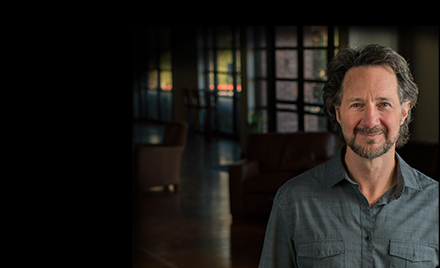
by Steve | Mar 8, 2021 | Home Page Hero Slider, Magazine, Magazine Articles, March-April 2021
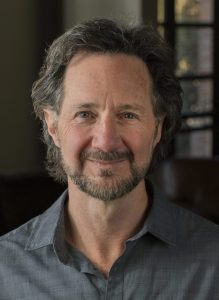
Rob Renfroe
rrenfroe@goodnewsmag.org
As you are probably aware, the Commission on the General Conference announced on February 26 that the 2020 General Conference has now been postponed until August 29, 2022. This is a second postponement, General Conference having previously been moved from May 2020 to August 2021, due to concerns regarding the COVID crisis.
At the same time, the Council of Bishops announced it is calling a special session of the General Conference to meet virtually on May 8, 2021, to consider a variety of issues, the most important of which is how we will conduct business as a church when we cannot meet in person.
United Methodist pastor and blogger Andy Bryan summed it up very well in a recent tweet: “I am a part of a denomination that needs to set a meeting to suspend our rules so that we can create new rules to dictate what we are supposed to do when we cannot meet to create rules.”
If that sounds confusing, it’s because it is confusing. And it’s confusing because we are a confused denomination. For fifty years many of our leaders – pastors and bishops – have confused the acceptance of nonbiblical theologies with openness. They have confused affirming behaviors contrary to the teaching of Scripture with giving grace. And they have wrongly confused the views of a postmodern, progressive culture with the values of God’s Kingdom.
Confused leadership creates confused organizations that create confusing plans that create more confusion – and more distrust. That’s why the Good News office (and the offices of all the orthodox renewal groups) has been flooded with the concerns of faithful UM pastors and laypersons who believe the additional postponement is nothing more than a ploy, the goal of which is to discourage traditional members to the point they will leave the church. And many, after being disappointed by the Council of Bishops over and over again in the past, are thinking this may now be the time to do just that.
We should give the General Commission on the General Conference some grace. The pandemic put them in a very difficult place. The Commission had to determine if a truly fair and representative General Conference could take place virtually, knowing that in many countries delegates might not have the same access to technology that we in the United States enjoy. And we should be grateful that the Commission announced that the postponed Conference will be scheduled in 2022, rather than leaving us without any idea when the Protocol of Reconciliation and Grace through Separation will be considered.
Still, we are in a confusing place. Unless some clarity is given regarding our future, the results are predictable. Members will leave. Churches will exit (some already have as a result of General Conference 2019 and the original postponement of GC 2020). In states where the laws favor the local church over the denomination (and there are many) lawsuits will be filed by some congregations to leave with their property. The Wesleyan Covenant Association’s recent announcement of a new orthodox Wesleyan denomination, the Global Methodist Church, will increase the number of churches who are willing to depart the UM Church, even if they must fight their way out through the courts. And, of course, apportionments will decline, further exacerbating the denomination’s already precarious financial situation.
Without clarity about a way forward, the Wesleyan movement, whether in the form of a traditional expression of the Christian faith or in the remaining post-separation UM Church, will be harmed numerically, financially, and spiritually. In the midst of a global pandemic, as racial issues continue to divide our country, at the same time that more people in the U.S. are walking away from the faith than ever before – in other words, when those around us desperately need the hope of the Gospel and the witness of the church – a lack of leadership and clarity about our future will weaken our ability to minister to a hurting and needy world.
What needs to be done? Denominational leaders need to state clearly and explicitly that they support the Protocol and that they will do all they can to secure its ratification.
Some already have. The progressive Western Jurisdiction did so last fall. A broad group of traditional leaders, including bishops, pastors, and laypersons, many not associated with conservative renewal groups, reiterated its support of the Protocol in February before the postponement was announced. And Reconciling Ministries reaffirmed its commitment to the Protocol shortly after the delay was made public. Conservative and progressive leaders have spoken out. It’s time for others to do the same.
1. The team that negotiated and proposed the Protocol should make a joint statement that they are still committed to its passage with no amendments. The entire church was grateful that an agreement was reached by progressive, centrist, and traditional leaders that makes an amicable parting possible. Since that time, other proposals have been put forth, but none by a team that is theologically diverse and representative of the whole church. We need those who performed the arduous work of creating the Protocol to remind us why it is still the best and most fair way forward. We need them to reaffirm that in spite of other proposed options, they are still fully in favor of the Protocol.
2. Centrist leaders need to reaffirm their unequivocal commitment to the Protocol. Centrists on the Protocol team played a valuable role in its creation. But since that time, we have not heard much, if anything, from them as to why it is still the way forward. Progressive and traditional leaders have reiterated their support of the Protocol. It is imperative that those who claim to be at the center of the church do so as well.
3. The Council of Bishops must lead the way and be clear that it is committed to the Protocol, as proposed. Nothing would be more helpful in alleviating the distrust and the angst so many of our members are feeling as a strong statement by the COB that it endorses and will work for the passage of the Protocol. If we must wait until 2022 to vote on the Protocol, the Council could be the “calm and assuring presence” our bishops have talked about so often by assuring the church that they will use all of their influence to secure the Protocol’s ratification.
4. If the Council of Bishops fails to make a statement, traditional bishops should declare they are committed to an orthodox Wesleyan expression and that they will support the new Global Methodist Church. Whereas most progressive bishops have been very open in the past about their support of The One Church Plan and other more radical solutions to our current crisis, traditional bishops have been less willing to indicate which plan they support. They have believed that rather than being an advocate for a particular path forward, it was better and more in keeping with their role as a bishop to the whole church to explain clearly the various plans. That way their pastors and members could make an informed decision for themselves about the solution they thought best. We can appreciate the balanced approach of our traditional bishops. But it is now time to move from education to direction. Again, what we need is clarity – what do the traditional bishops believe, what will they do, and how will they lead if the Council of Bishops fails to do so.
There is talk of traditional delegates boycotting the special General Conference to signify their dissatisfaction that the Protocol was not included on the agenda. If successful, they could prevent a quorum for the Conference being reached and no business could be conducted. I don’t want that to happen. It will not serve the church well and it will only make traditionalists look small and petty. But it may be the route some will take if they believe support for the Protocol is waning.
There are also discussions of delegates joining together to add the Protocol to the agenda and voting on its passage. This would require two-thirds of the delegates agreeing to suspend the rules of the Conference. Am I in favor of this path? Yes. There is no reason that an up or down vote could not be held on the Protocol. The Conference could vote to act on it as is with no amendments. The Protocol has been widely distributed; we have had more than ample time to consider it; and if paper ballots work for matters to be addressed in the special Conference called for May of this year, there is no case to be made that they cannot be used for the Protocol. Leaders of all the major factions within the church have previously supported it and we all expected it to be passed this August. We don’t need hours of debate, quibbling over details, or dealing with everyone’s better idea. We can and should vote on the Protocol on May 8.
If the bishops and the members of the Commission on General Conference believe we should wait until 2022, then they must provide what the church needs. Clarity about their commitment to the Protocol. An assurance that if we wait until 2022, the Protocol will be passed. Reason to believe that even if we disagree on important issues, we are not confused about the way forward.










 By Walter Fenton –
By Walter Fenton – 


